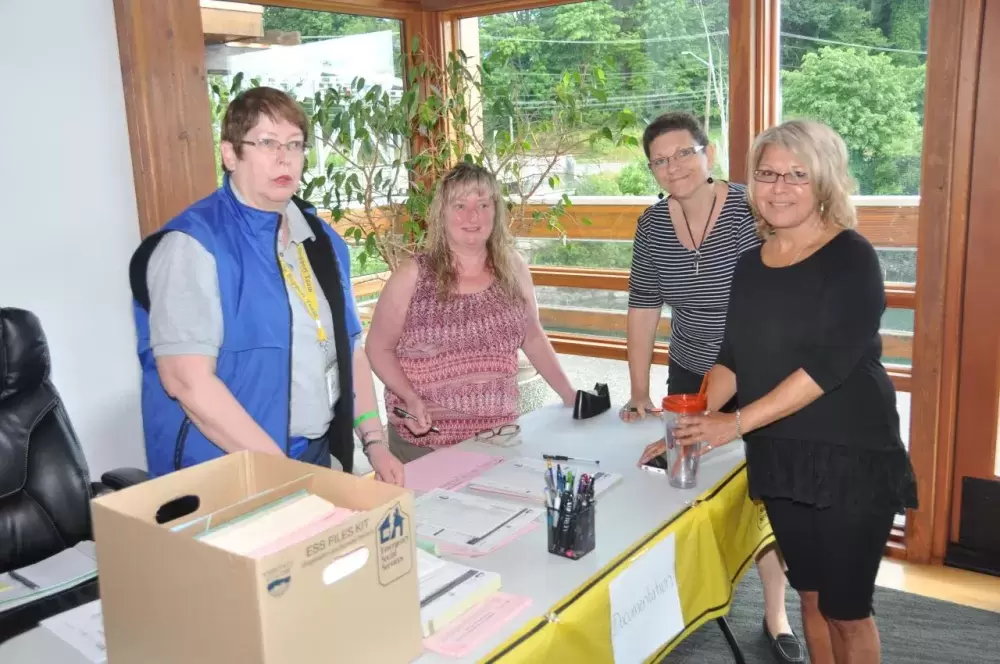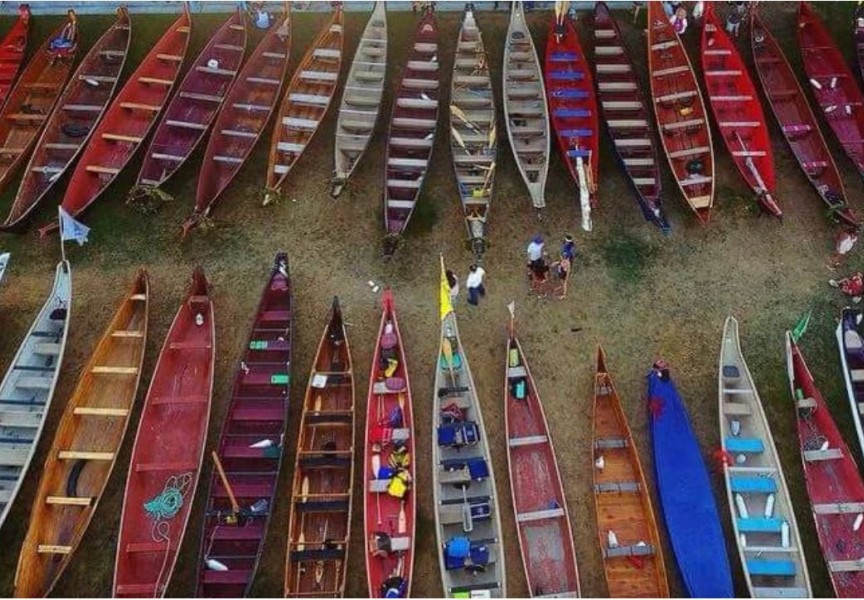8:45 am Thursday: Tseshaht First Nation Office
At the edge of the Somass River, Scott Lorette of the Vancouver-based Heavy Urban Search And Rescue team is setting up a mobile water desalination/disinfection system.
According to the Exercise Coastal Response scenario, the previous day, Tseshaht Emergency Coordinator Lisa Gallic contacted HUSAR to advise that the Tseshaht water supply was unusable. (This was the scenario hinted at by HUSAR Training Officer Kirk Heaven on opening day.)
“This unit takes 10 litres of water and produces three litres of potable water and seven litres of brine, which is disposed,” Lorette explained.
The river water is pushed through a semi-permeable membrane at high pressure to remove the salt and contaminants, then disinfected with ultraviolet light.
“It’s much like they use on cruise ships, only much smaller,” Lorette said.
On Thursday, the HUSAR unit brought in a portable 500-litre reservoir, which would be carried on a pickup truck, for display purposes.
9:00 am: Inside the Great Room, Emergency Social Services Mobile Support Team leader Wayne Hartley delivers the briefing.
“All communications are down. There is no phone reception, cellular or landline. No text, no email,” he said. For the moment, all communication must be done by two-way VHF radio.
The Somass River (Orange) Bridge is out. The Tseshaht office was selected to serve evacuees unable to cross over to the bigger centres in town.
As with any exercise, Hartley noted, things can change rapidly, he noted, “and today will be no different.”
On Monday at the Fall Fair Grounds, Ha-Shilth-Sa noticed that, with everyone working under simulated emergency conditions, simple communications often became confusing, such as when a HUSAR member wanted to know whether the water in the kitchen was safe to drink.
“Do you want to know if that is part of the scenario or for real?” he was asked.
In fact, he just wanted to know if it was okay to fill up his water bottles.
On Thursday, to avoid such confusion, Hartley explained the simple protocol used to avoid such confusion.
“If you have a real medical or safety emergency, if someone cuts himself or twists an ankle, for example, say ‘No Duff,’” he explained.
When the other participant hears the term, they automatically know this is a real, not simulated, situation.
Similarly, any communication on the radios must be preceded by “Exercise Exercise Exercise” to verify that the information is part of the exercise.
And, as part of his briefing, Hartley reminded volunteers of his team’s role.
“We are Mobile SUPPORT – we don’t take over,” he said.
9:23: Emergency Reception Centre manager Karen Freethy announces that the centre will shortly receive evacuees.
Gallic was asked how everything was proceeding, two days in.
“The evacuation has been going well. People living on Hector Road and McCoy Lake Road have been evacuated to Tseshaht Market. We have had a lockdown of food and services at the Market.
“We have made a delivery of food to Haahuupayak School, for students and residents in that area, for 240 people… water, blankets, first aid,” Gallic said, acknowledging, “This is Duff.”
As part of the early scenario, Gallic noted, communication was down to satellite phone service. Then the SAT phones went down.
9:42 am: Hartley announces that 75 evacuees will arrive within 10 minutes.
An hour later, Gallic confirms that the “arrival” is yet more Duff.
“We got three. But I didn’t know that until now.”
At 10:42, Wayne MacDonald of the Cowichan Valley Amateur Radio Society arrives to advise that radio communications have now been set up at the office.
“This station should always have a grab-and-go VHF radio kit, and be ready to hook in,” MacDonald told Ha-Shilth-Sa.
MacDonald said historically, amateur radio clubs have always served as an emergency communications network, supplementing the police, military and other professional organizations.
At the intake desk, existing participants took turns being interviewed as “victims,” using predetermined identities and circumstances.
On Thursday afternoon, Ha-Shilth-Sa was scheduled to take part in a gritty three-hour tour of the disaster site, with visits to the “morgue,” first aid stations and emergency feeding stations, with provincial Minister of State for Emergency Preparedness Naomi Yamamoto.







